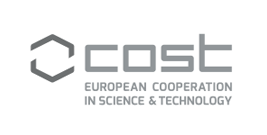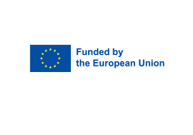Abstract
Discovery of a novel therapeutic candidate against animal trypanosomiasis
Kayhan Ilbeigi1, Dorien Mabille1, An Matheeussen1, Rik Hendrickx1, Nick Van Reet2, Birgit Mertens3, Roel Anthonissen3, Fabian Hulpia4, Louis Maes1, Clement Regnault5, Phil Whitfield5, Marzuq A. Ungogo6, Harry P. De Koning6, Serge Van Calenbergh7, Guy Caljon1*
1Laboratory of Microbiology, Parasitology and Hygiene (LMPH), University of Antwerp, Antwerp, Belgium
2Protozoology Research Group, Institute of Tropical Medicine, Antwerp, Belgium
3Sciensano, SD Chemical and Physical Health Risks, Brussels, Belgium
4Janssen Pharmaceutica NV, Janssen Pharmaceutical Companies of Johnson & Johnson, Beerse, Belgium
5Polyomics, University of Glasgow, Wolfson Wohl Cancer Research Centre, Switchback Rd, Bearsden, Glasgow, UK
6School of Infection and Immunity, College of Medical, Veterinary and Life Sciences, University of Glasgow, Glasgow G12 8TA, UK
7Laboratory for Medicinal Chemistry (Campus Heymans), Ghent University, Gent, Belgium
*Presenting and corresponding author, Guy.Caljon@uantwerpen.be
Animal trypanosomiasis (AT) is a widespread disease with a devastating impact on animal husbandry due to the scarcity of efficient drugs and development of drug resistance, hence emphasizing the need for novel treatment options. Following previous identification of 3’-deoxytubercidin as a highly potent trypanocide with curative activity in mouse models of both stage-1 and stage-2 Human African Trypanosomiasis (HAT), we now present a comprehensive preclinical evaluation of new 6-amino substituted tubercidin analogues with promising activity against a broad range of AT species. Potent hits were identified in vitro across all important AT species, i.e. Trypanosoma brucei brucei, sensitive and isometamidium (ISM)-resistant Trypanosoma congolense, Trypanosoma vivax, Trypanosoma evansi (type A and B) and Trypanosoma equiperdum. Selected ‘hits’ were further tested for in vitro metabolic stability (using bovine, horse and piglet liver microsomes), in vivo mouse models for each AT species, genotoxicity assays and mode-of-action studies (i.e. genome-wide RNA interference library screening, metabolomics). Analogue 3 was highly active in T. vivax, T. congolense, T. equiperdum, T. evansi and T. brucei curative mouse models. Furthermore, there was no indication of in vitro genotoxicity as confirmed by Vitotox®, the micronucleus and the comet assays. Mode-of-action studies for 3 revealed that the P1 nucleoside transporter and adenosine kinase are involved in drug uptake and activation, respectively. Given the preferred target product profile for a broad-spectrum drug against AT, analogue 3 represents a promising ‘lead’ candidate for treatment of animal trypanosomiasis, regardless of the causative species.
COST (European Cooperation in Science and Technology) is a funding agency for research and innovation networks. The COST ACTIONS help connect research initiatives across Europe and enable scientists to grow their ideas by sharing them with their peers. This boosts their research, career and innovation.
One Health drugs against parasitic vector borne diseases in Europe and beyond
OneHealthdrugs
24/10/2022
23/10/2026
27/05/2022
Download file
Maria Paola Costi
Anabela Cordeiro da Silva
Maria Cristina Notarsanto
Maria Esposito and Laura Leonardi


